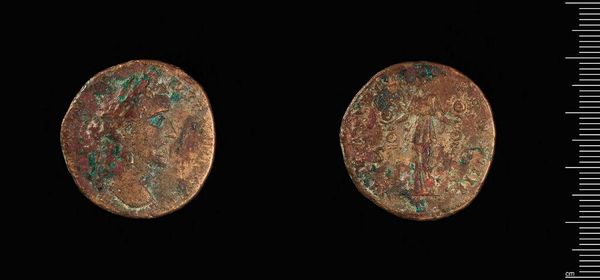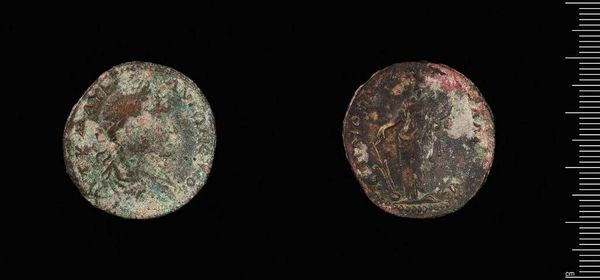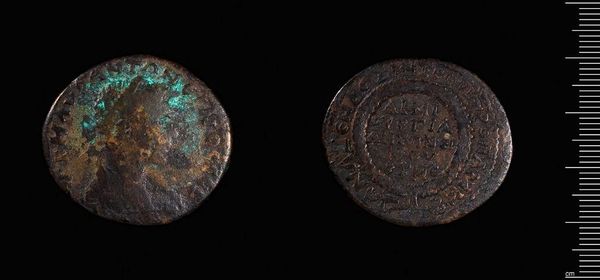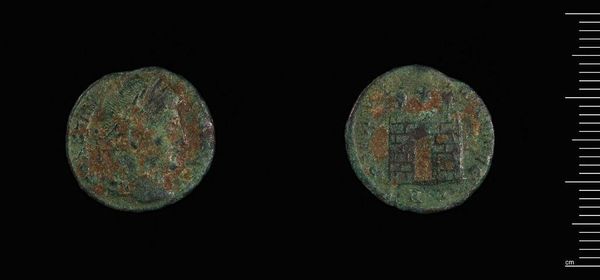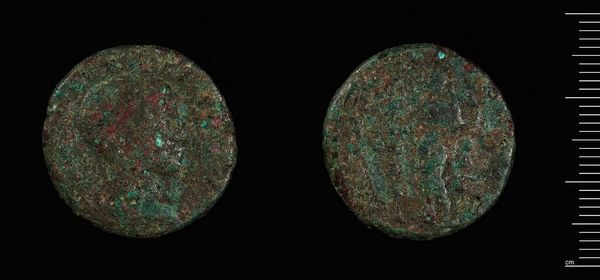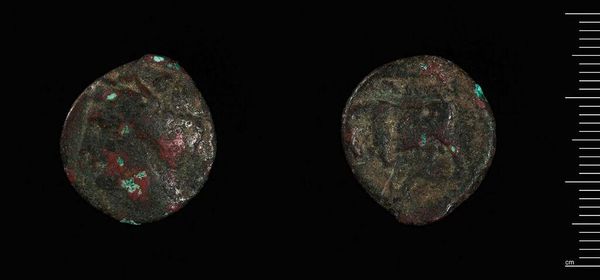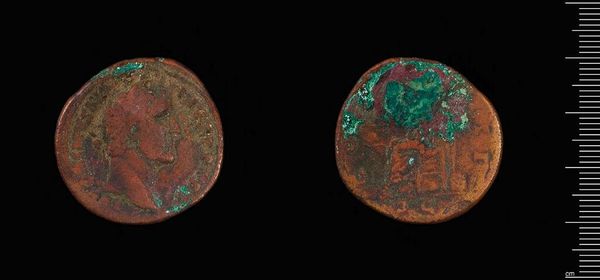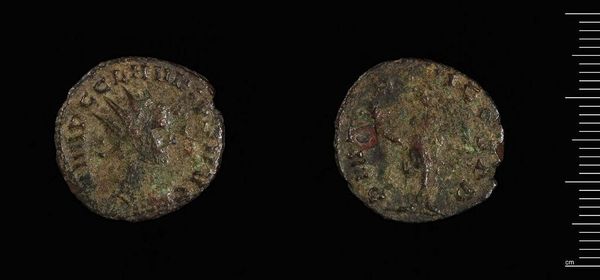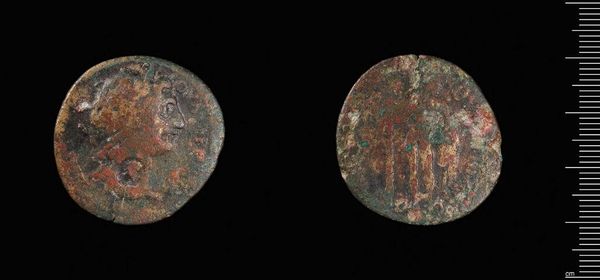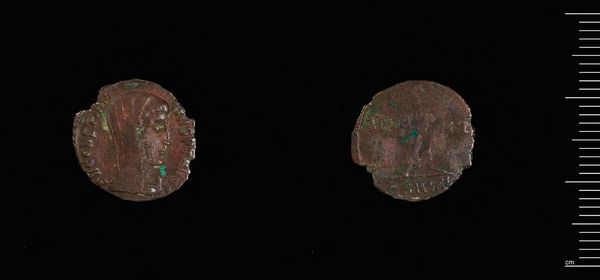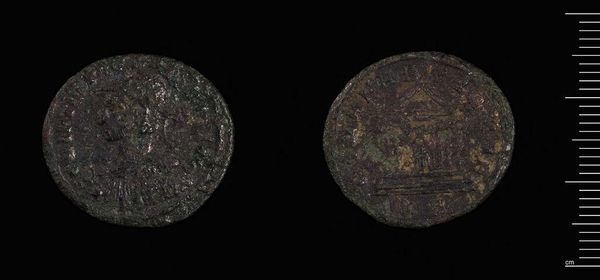
Dimensions: 21.38 g
Copyright: CC0 1.0
Curator: This is a coin of Tripolis, likely made during the reign of Caracalla. I’m struck by its materiality—the worn bronze speaks volumes of its journey through time and the countless hands it has passed through. Editor: Absolutely! I'm drawn to how such a seemingly small object can serve as a portal into understanding broader imperial narratives. It's fascinating how the image of Caracalla gets reproduced and disseminated. Curator: Consider the labor involved in its production, from mining the metal to the skilled artisans who engraved the dies. It blurs lines between art and craft. Editor: Indeed! The image of the temple on the reverse, for instance, becomes a statement of Roman power, reflecting imperial aspirations in the eastern Mediterranean. The temple's presence underscores the socio-political dominance Rome sought to establish. Curator: The coin’s weight and size held tangible value in ancient society; its creation served an economic purpose, but it also acted as propaganda for Caracalla's rule. Editor: Exactly! It’s a symbol of currency and authority intertwined. The coin's existence invites us to consider who benefited from this system and who might have been marginalized by it. Curator: It's a fascinating artifact! Looking at it, I reflect on the power of objects to transmit political and social messages across centuries. Editor: I agree! It's a reminder that even the smallest objects can be potent symbols of power, identity, and historical context.
Comments
No comments
Be the first to comment and join the conversation on the ultimate creative platform.
